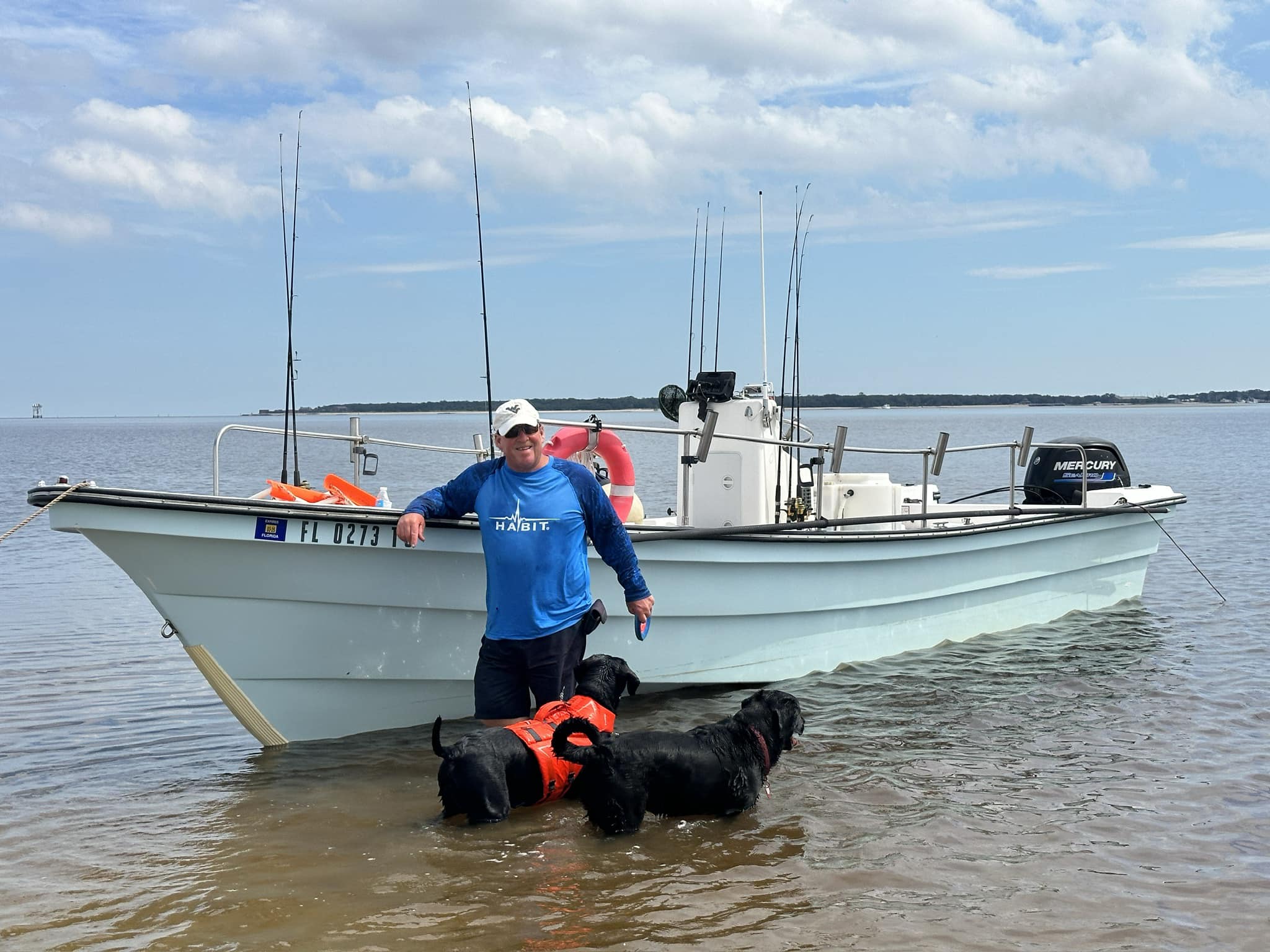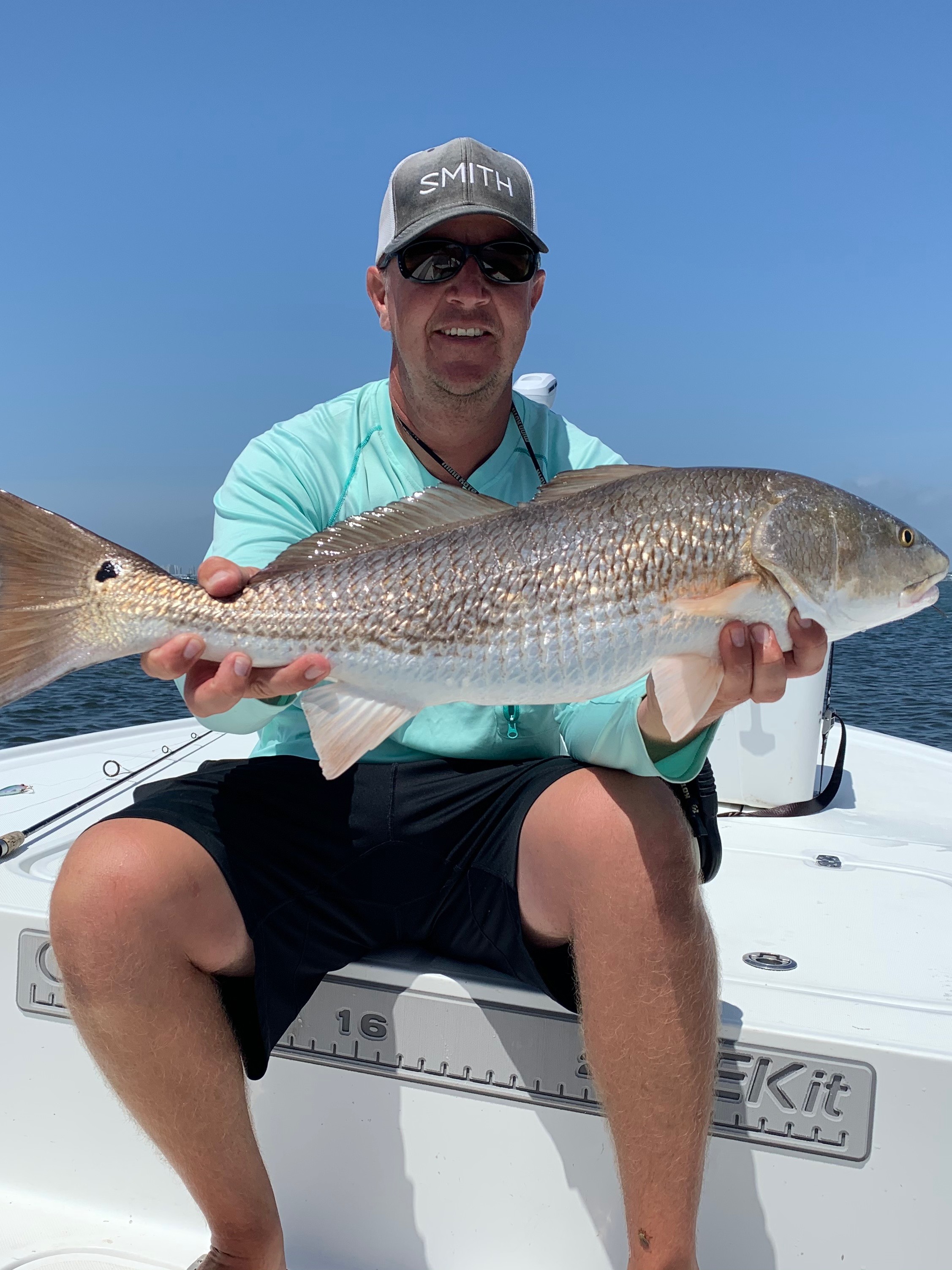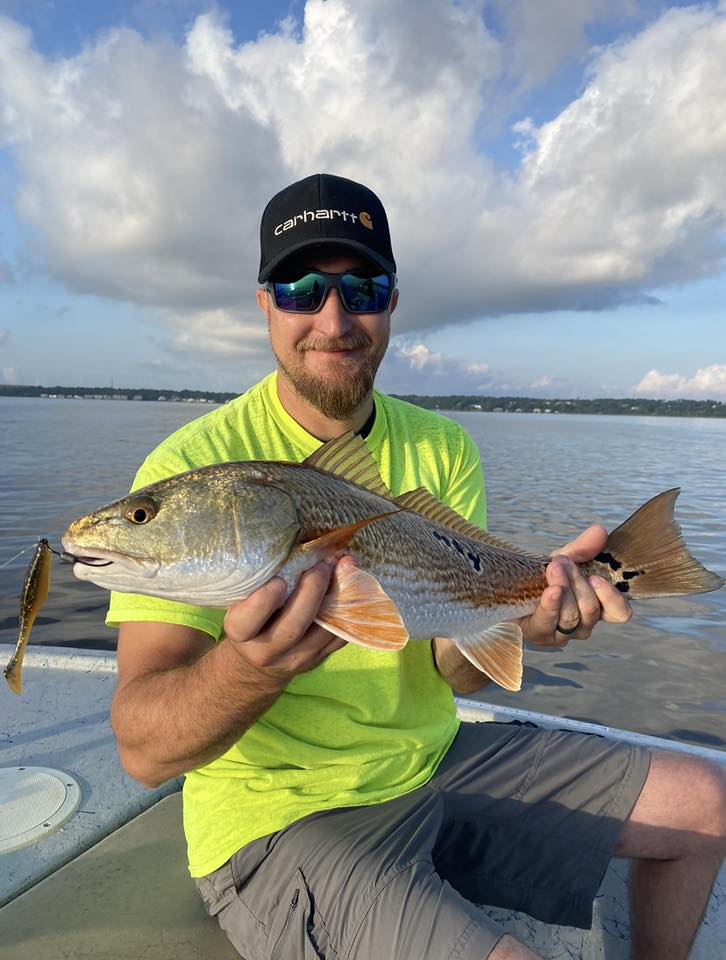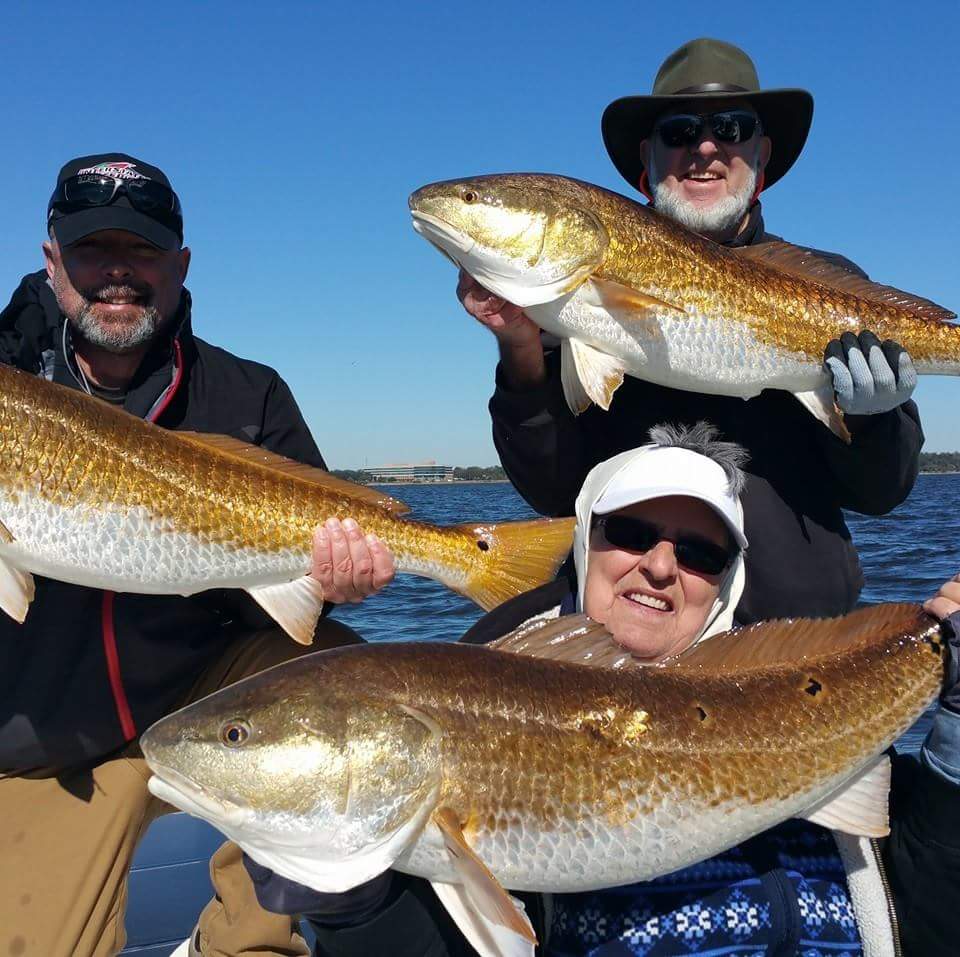Deep Sea, Nearshore Fishing in Pensacola
Half Day Nearshore Fishing
3-Hour Pensacola Angler's Delight
Bay Charter - 25' Skeeter
Deep Sea, Nearshore Fishing in St. Augustine
Half Day Or Full Day - Nearshore
Inshore, Nearshore, Jetty in Fernandina Beach
Amelia Island Charter Fishing Trips
Inshore, Deep Sea, Nearshore in Pensacola
Pensacola Fishing Frenzy
Inshore, Nearshore, Jetty in Pensacola
Limits With Lance
Inshore, River, Flats in Pensacola
2-8 Hours Inshore Trip
Nearshore Fishing in Pensacola
NEARSHORE RED SNAPPER FISHING
Inshore, Flats Fishing in Pensacola
Inshore "Catch Fish Guarantee"
We started Captain Experiences to make it easy to book fishing and hunting guides around the world. With over 2,000 Damn Good Guides, our platform makes finding and booking a trip seamless. Head here to check out our trips.
Located on the Gulf of Mexico, Pensacola, Florida, is a premier destination for fishing enthusiasts. This vibrant coastal city offers a diverse range of fishing experiences year-round. In this guide, we'll explore the best seasons for fishing, the types of fish you can catch, and tips to make the most of your fishing adventure in Pensacola.
Why go Fishing in Pensacola, Florida?

Pensacola's unique location on the Gulf Coast provides access to both inshore and offshore fishing opportunities. The area is known for its rich marine biodiversity, scenic waterways, and favorable fishing conditions, making it a top choice for anglers of all skill levels.
Best Seasons for Fishing in Pensacola, Florida
Fishing in Pensacola is productive throughout the year, but certain seasons are particularly favorable for specific types of fish. Here’s a breakdown of what to expect each season:
Spring (March to May)
Spring is an excellent time to fish in Pensacola as warmer waters increase fish activity. During these months, you can expect to catch Cobia, Spanish Mackerel, and Speckled Trout.
Summer (June to August)
Summer is the peak fishing season in Pensacola. The warm weather and calm seas provide ideal conditions for both inshore and offshore fishing. Key catches include Red Snappers, King Mackerel, and Tarpon.
Fall (September to November)
Fall offers cooler temperatures and continued excellent fishing opportunities. The fish are feeding heavily in preparation for winter. Expect to catch Redfish, Flounder, and Pompano.
Winter (December to February)
Winter fishing in Pensacola is less crowded but still rewarding. The cooler water temperatures affect fish behavior, but there are still plenty of opportunities. In the winter, you can expect to mainly catch Sheepshead, Black Drum, and Speckled Trout.
Types of Fish in Pensacola
Pensacola’s waters are home to a wide variety of fish species, each offering a unique challenge and reward. Here are some of the most sought-after catches:
Inshore Fish
Speckled Trout

These fish have elongated bodies with silver scales and dark spots along their upper bodies. They are commonly found in shallow coastal waters, bays, and estuaries. The best technique for catching Speckled Trout is using light tackle with live shrimp or soft plastic lures, casting near seagrass beds or under lights at night.
Redfish

Recognizable by their reddish-bronze body and distinctive black spot near the tail, Redfish are strong fighters. They inhabit shallow waters, particularly marshes, bays, and tidal flats. Use medium to heavy tackle with live bait such as mullet or crab, or artificial lures like gold spoons and soft plastics. Sight casting in shallow waters can be very effective.
Flounder

These flatfish have both eyes on one side of their body, which is brown with various spots for camouflage. Flounder are bottom-dwellers found in sandy or muddy areas near piers, docks, and estuaries. Light to medium tackle with live bait such as mud minnows or finger mullet, or jigging soft plastic lures along the bottom, is recommended.
Sheepshead

With vertical black stripes over a silver body and strong, human-like teeth, Sheepshead are often found around structures such as piers, rocks, and jetties. Use light tackle with small hooks and live bait such as shrimp, fiddler crabs, or barnacles, fishing near pilings and other structures where they feed.
Offshore Fish
Red Snapper

These vibrant red fish have a streamlined body and a slightly pointed snout. Red Snappers are typically found in deeper waters near reefs and artificial structures. Heavy tackle with circle hooks and live or cut bait such as squid or sardines is best, dropping your bait near reefs or wrecks.
King Mackerel

Sleek and elongated with a greenish-blue back and silver sides, King Mackerel are known for their speed and sharp teeth. Found in deeper offshore waters and around structures such as oil rigs and reefs, trolling with live bait such as blue runners or dead bait like ribbonfish is highly effective. Use wire leaders to prevent their sharp teeth from cutting the line.
Cobia

Cobia have elongated bodies with dark brown coloring and a white underside. They migrate along the coast and can be found near buoys, pilings, and wrecks. Use medium to heavy tackle with live bait such as eels or crabs, or cast large jigs and artificial lures near structures where they are known to congregate.
Tarpon

Tarpon have large, shiny silver scales and an elongated body. They are famous for their acrobatic leaps when hooked. Usually found in coastal waters, estuaries, and near river mouths, Tarpon can be caught using heavy tackle with live bait such as mullet or crabs, casting to schools of fish or drifting bait in strong tidal currents.
Your Next Fishing Adventure in Pensacola, Florida
Whether you're targeting redfish in the bays, chasing speckled trout along the shoreline, or battling trophy tarpon in the coastal waters, Captain Experiences offers a variety of guided fishing trips tailored to your preferences. With experienced captains who know Pensacola's waters like the back of their hands, top-notch equipment, and a commitment to providing unforgettable fishing experiences, Captain Experiences is your go-to choice for fishing adventures in Pensacola. Book your next fishing trip in Pensacola, Florida today!
Gavin Abbott
Updated on June 6, 2024

March 8, 2022

November 7, 2023

October 26, 2020

January 7, 2022

April 15, 2022
Related Articles
June 12, 2024
August 2, 2023
June 28, 2024
Featured Locations
- Fishing Charters Near Me
- Austin Fishing Guides
- Biloxi Fishing Charters
- Bradenton Fishing Charters
- Cabo San Lucas Fishing Charters
- Cancun Fishing Charters
- Cape Coral Fishing Charters
- Charleston Fishing Charters
- Clearwater Fishing Charters
- Corpus Christi Fishing Charters
- Crystal River Fishing Charters
- Dauphin Island Fishing Charters
- Daytona Beach Fishing Charters
- Destin Fishing Charters
- Fort Lauderdale Fishing Charters
- Fort Myers Fishing Charters
- Fort Walton Beach Fishing Charters
- Galveston Fishing Charters
- Gulf Shores Fishing Charters
- Hatteras Fishing Charters
- Hilton Head Fishing Charters
- Islamorada Fishing Charters
- Jacksonville Fishing Charters
- Jupiter Fishing Charters
- Key Largo Fishing Charters
- Key West Fishing Charters
- Kona Fishing Charters
- Lakeside Marblehead Fishing Charters
- Marathon Fishing Charters
- Marco Island Fishing Charters
- Miami Fishing Charters
- Montauk Fishing Charters
- Morehead City Fishing Charters
- Naples Fishing Charters
- New Orleans Fishing Charters
- New Smyrna Beach Fishing Charters
- Ocean City Fishing Charters
- Orange Beach Fishing Charters
- Panama City Beach Fishing Charters
- Pensacola Fishing Charters
- Pompano Beach Fishing Charters
- Port Aransas Fishing Charters
- Port Orange Fishing Charters
- Rockport Fishing Charters
- San Diego Fishing Charters
- San Juan Fishing Charters
- Sarasota Fishing Charters
- South Padre Island Fishing Charters
- St. Augustine Fishing Charters
- St. Petersburg Fishing Charters
- Tampa Fishing Charters
- Tarpon Springs Fishing Charters
- Venice Fishing Charters
- Virginia Beach Fishing Charters
- West Palm Beach Fishing Charters
- Wilmington Fishing Charters
- Wrightsville Beach Fishing Charters


































